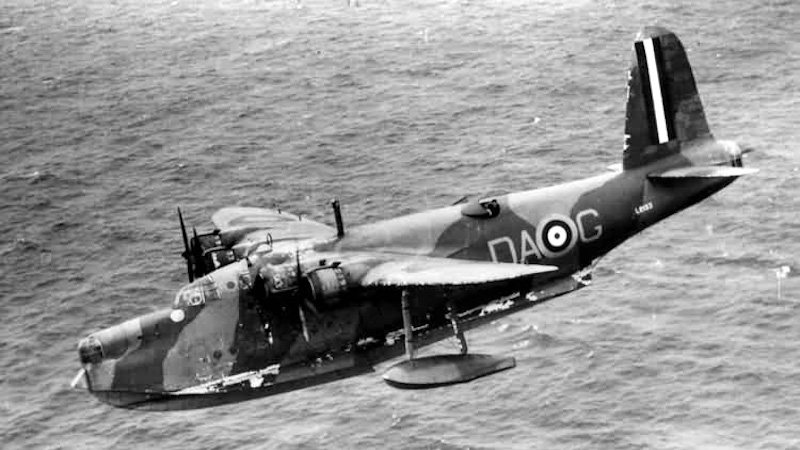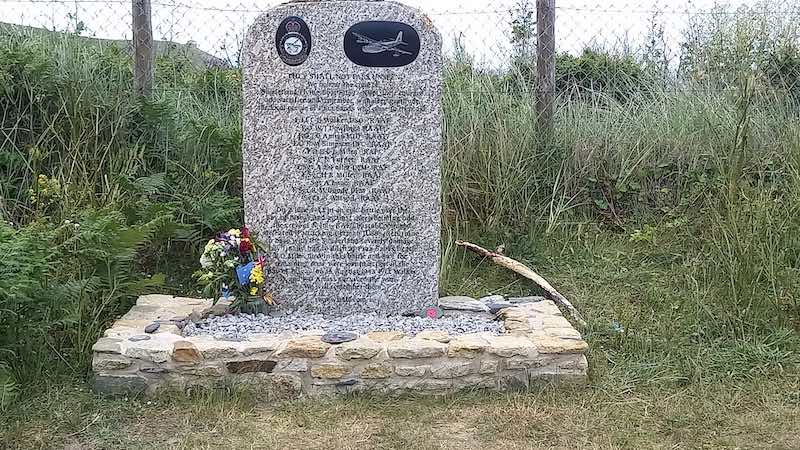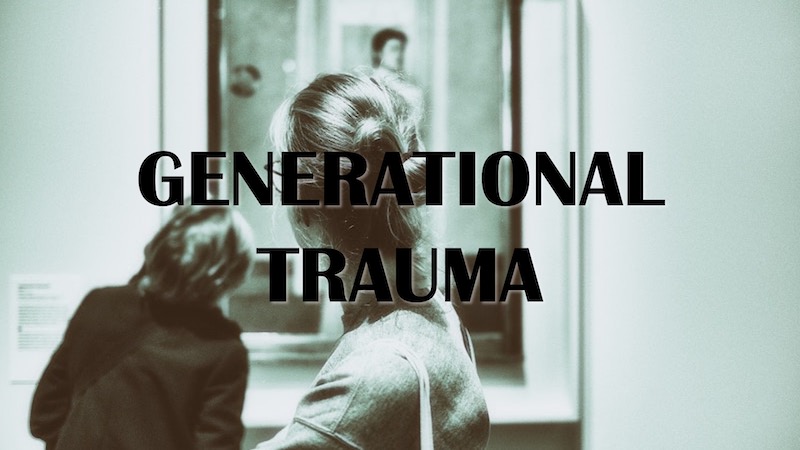The Sunderland Memorial – uniting a splintered family
- 12 June 2024
- Posted by: Michael H Hallett
- Category: Generational trauma ,

The village of Praa Sands on the southern coast of Cornwall is a little-known beach resort where families come to play in the sand and surf or hang out at the beachside café. At the far end of a rough patch of grass known somewhat wishfully as ‘the green’ stands a grey marble slab on a rough stone base—the Sunderland Memorial.

I discovered the Sunderland Memorial during a walking holiday along the South West Coast Path. Fittingly enough, I arrived at Praa Sands on 6 June 2024, the 80th anniversary of the 1944 D-Day landings in Normandy.
The memorial commemorates an event that took place just over a year earlier, on 2 June 1943, when a Short Sunderland flying boat from No. 461 Squadron, Royal Australian Air Force, crash-landed on the beach after suffering combat damage over the Bay of Biscay. One crew member died, though most of the survivors were killed only two months later.
The memorial shook me to my core. Not because of the incident itself, but because it united the two ragged extremes of my splintered family—both my mother’s and father’s step-families—in a single event, independently of the connection through my parents.
Short Sunderland
The connection on my mother’s side is through the aircraft itself. The Short Sunderland was built by Short Brothers during World War 2, a total of 749 being produced. It was a highly successful long-range naval patrol aircraft.
Short Brothers, the world’s oldest aircraft company, was established in 1908 by Horace, Eustace, and Oswald Short.
My mother’s parents divorced in the 1930s after my grandmother Violet had an affair—with Oswald Short. They later married, were presented to King George VI in 1949, and retired to Rock on Cornwall’s north coast.
Flight 777
Sunderland EJ134 went on patrol on 2 June 1943 due to an event that took place the previous day—the downing of British Overseas Airways Corporation (BOAC) Flight 777, a civilian flight from Lisbon in neutral Portugal to Bristol.
Throughout the war, BOAC maintained regular flights to Lisbon, protected by League of Nations laws. Both sides used the route to slip intelligence agents behind enemy lines. Apart from a couple of incidents, these aircraft were left alone—except Flight 777.
On 1 June the flight was operated by a Douglas DC-3 airliner, G-AGBB. It was attacked by Junkers 88 aircraft from the Luftwaffe’s anti-shipping unit Kampfgeshwader 40 and shot down some 200 miles north of Spain. The four crew and 13 passengers died.
Sunderland EJ134 went looking for signs of G-AGBB.
Not Churchill, Chenhalls
Several theories have been advanced to account for the destruction of Flight 777. One is that the Germans targeted the noted British actor and propaganda filmmaker Leslie Howard, who was on the flight.
Another, accepted by British Prime Minister Winston Churchill, centres on Howard’s accountant, who accompanied him: Alfred T. Chenhalls. He was a “thick-set man smoking a cigar” (Churchill’s description) who not only looked like the British PM but whose unusual name was not dissimilar to Churchill.
According to this theory, Axis agents in Lisbon tipped off the Germans, suspecting the British Prime Minister was on board. Churchill was actually in north Africa at the time; he flew back to Britain on 3 June in a military transport aircraft.
What’s not in doubt is that Alfred T. Chenhalls was my step-grandfather’s nephew.
Abandonment
After my grandmother’s early death from tuberculosis, my grandfather Charles Hallett married Beatrice Chenhalls in 1930 and moved to Bristol. But the marriage didn’t work out. At some time in the 1930s Charles simply walked out of their home in Gloucester Road (above my step-grandfather’s pie shop) and disappeared.
Abandonment on my father’s side was mirrored on my mother’s side when Violet had her affair with Oswald Short and was ejected from the family—to Cornwall.
As I describe in Living with ghosts – confronting generational trauma, I inadvertently began unpicking my family’s trauma in 2010 when I ordered my grandmother’s death certificate.
That journey took me to Rock in 2015, to Oswald and Violet’s house, to encounter the pain and separation that Violet had no desire—but no option—to cause.
Little did I know that 9 years later I would be back in Cornwall, at Praa Sands, to bring together the loose ends of an emotionally far-flung family and bring the cycles of pain, of separation, and of abandonment to a close.
Whatever happened in your family, know that resolution is possible. But you must go out and meet it. Follow the urges and the promptings, the hunches and the synchronicities, and you will encounter your own version of the Sunderland Memorial.
Next steps
For further resources on generational trauma, both free and paid, please click on this image.

